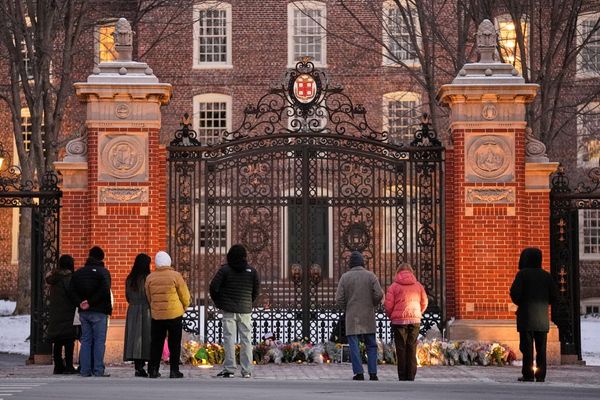A tit-for-tat style partisan congressional redistricting fight Republicans started in Texas appears ready to expand in the next few months, with some states poised to redraw their congressional maps and officials in others publicly considering doing so.
Texas Gov. Greg Abbott signed a new map into law last week that targets five Democrat-held seats for the midterm elections in 2026, and California, Ohio and Utah appear to be headed to new maps as well.
Political one-upmanship may also spark new maps in states such as Illinois, Indiana, New York and Maryland. Missouri’s Republican governor has just called a new legislative session for redistricting.
Adam Kincaid, executive director of the National Republican Redistricting Trust, said that many states are still in limbo about their redistricting plans, putting the country in an “interesting purgatory.”
“There will be maps that are different in 2026 than we have now, we just don’t know where all those maps will be yet. I think that’ll play out over the course of the next three months,” Kincaid said.
Kareem Crayton, vice president of the Brennan Center for Justice office in Washington, called the flurry of summer redistricting “unprecedented.”
He and other experts said the pressure has built for a while. Crayton pointed to the 2019 Supreme Court decision in Rucho v. Common Cause, where the majority said that federal courts would not consider challenges to partisan gerrymandering.
“It was the beginning of an invitation to states to go hog wild, and they have, unfortunately,” said Crayton, who led one of the groups who brought the case.
Kincaid says redistricting this summer is a continuation of what’s happened in previous decades, where legal challenges to congressional maps drove redistricting efforts.
“The present moment has been coming for 20 something years,” Kincaid said. “We’ve been in a constant state of lawfare and mid-decade redistricting since 2000 at a minimum.”
Kincaid said the push from Republicans to redistrict now is because of “uncertainty” after the 2020 census.
“It was not clear who the next leader of the GOP was going to be, and it wasn’t clear what coalition we were going to be working with for the next decade. And so, I think it led a lot of folks in the states to be a little bit more cautious on redistricting, because they didn’t really know what they were dealing with,” Kincaid said.
Partisan control
Most of the states where leaders have discussed redistricting or taken steps to do so have unified party control of state government – including California, Maryland, Indiana, Missouri and Texas.
Missouri Gov. Mike Kehoe last week called for a special session to approve a new map to begin Wednesday. He released a proposed map that would dismantle the current 5th District, a seat currently held by Rep. Emanuel Cleaver II, in favor of one that would lean in favor of Republicans.
“In attempting to dismantle the Fifth District, state lawmakers would be working to drown out Missouri voices in favor of a single man a thousand miles away,” Cleaver said in a statement last week.
Former President Barack Obama has urged Democrats to fight back on redistricting, reportedly backing California Gov. Gavin Newsom’s response to the new Texas map.
“We’re facing an existential threat to our democracy,” Obama said in a video appearance with former Attorney General Eric Holder posted to social media last week.
Chris Warshaw, an assistant professor at George Washington University, said the escalation of mid-decade redistricting spurred by Trump could further nationalize the country’s politics. If control of state houses can mean control of Congress, he said money and attention can follow suit.
“It’s going to nationalize state races, it’s going to make governor’s races and state Supreme Court races entirely about redistricting, since becoming a unified control of government, or stopping unified control of government, is the only way to facilitate or block gerrymandering,” Warshaw said.
Justin Levitt, a law professor at Loyola Marymount University who served as the White House senior policy adviser for democracy and voting rights during the Biden administration, said that drawing up new congressional districts can have its downsides, even when one party controls all of state government.
Incumbents can become more vulnerable, have their districts moved out from under them and anger voters who want better choices.
Levitt said that the “mutually assured destruction” of expanding mid-decade redistricting may help limit its spread.
“What’s the point of changing the district lines and ticking off your congressional delegation if it doesn’t achieve much?” Levitt said. “If Missouri Republicans could get one additional district and in so doing put its own incumbents in jeopardy, and tick off the entire delegation, and then Illinois responds by gerrymandering the three remaining Republicans out of Illinois, then what’s the upside there?”
Commission question
For decades, voting rights advocates in many states have pushed them to adopt independent or nonpartisan commissions for redistricting. By 2021, 22 states had some form of commission involved in the redistricting process, ranging from advisory panels to actual mapmakers, according to a report from the Campaign Legal Center.
The present flurry of mid-decade redistricting represents a potential retreat from that effort. California has already taken steps to redistrict on its own, despite the presence of a nonpartisan commission in the state.
Voters there will need to weigh in on a ballot initiative in November that, if approved, would put a new map that would favor Democrats in place for elections through 2030.
Both parties are preparing for that vote. Former House Speaker Kevin McCarthy and former California Gov. Arnold Schwarzenegger are opposing the proposal, while Newsom and his allies are urging voters to support it.
Levitt saw it as a good sign that the California legislature didn’t take the step to unwind the commission entirely, instead putting the new map directly on the ballot for this fall. Levitt said voters have routinely backed efforts to pare back on partisan gerrymandering, even in states under single party control.
Democratic New York Gov. Kathy Hochul has publicly mulled the state’s own redistricting — which would require unwinding the state’s quasi-independent commission and passing a constitutional amendment, a tall order ahead of the 2026 midterms.
“Now we are already seeing the unraveling of nonpartisan commissions that were really doing a lot of good,” Warshaw said. “One of the things that gave me hope about the future was the growth of nonpartisan commissions.”
Courts involved
State and federal courts likely will play a role in redistricting ahead of 2026, as fast-moving litigation plays out over the next few months.
Last month, a state court in Utah found the state’s existing map, which currently has four Republicans in Congress, violated a voter-passed provision for an independent redistricting process. Additionally, the judge in the case denied the state legislature’s effort to forestall the new redistricting process.
Democrats are optimistic that a new map in Utah could give them a chance to pick up a seat in a state where they haven’t had a member of Congress since 2021.
The Texas map has already wound up in court as well, as the challengers to the state’s first map have sought to bring this newest one into the case and block it ahead of the 2026 midterms.
At the edge of the conversation sits the Louisiana redistricting case currently before the Supreme Court, where challengers have sought to toss a court-mandated map under the Voting Rights Act that resulted in a second Democratic seat in the state.
The post Redistricting poised to spread ahead of midterm elections appeared first on Roll Call.







